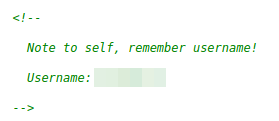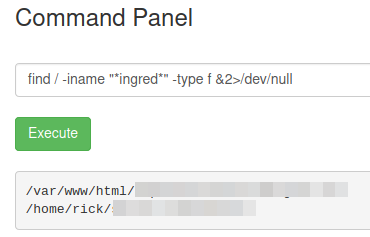Pickle Rick
This is a writeup for the Pickle Rick theme challenge on Try-Hack-Me which requires you to exploit a Webserver to find 3 ingredients that will help Rick make his potion to transform himself back into a human from a pickle. Rated as Easy/Beginner level machine.
Introduction
In this post, we’ll try to root Pickle Rick. It was created by tryhackme. It is rated as Easy/Beginner level machine.
Prerequisites
Kali Linux / Parrot Security OS
The virtual machine we’ll use to source the attack vectors against the Pickle-Rick machine. These Linux distribution has all required tools pre-installed. Choose one of them.
- Kali Linux VM (based on Debian distribution) can be downloaded for both VMware and VirtualBox from Offensive-Security
- Parrot Security VM (based on Arch distribution with different desktop flavors) can be downloaded from Parrot Security
TryHackMe account
Signup or login to TryHackMe, deploy the machine and give it a couple of minutes to boot.
Dedicated Directory
We need to create a dedicated directory in our home directory ~ for our findings. We’ll use mkdir to create the directory and cd to change into it:
1
2
$ mkdir ~/tryhackme/pickle_rick
$ cd ~/tryhackme/pickle_rick/
Add IP to hosts file [OPTIONAL]
For better readability we’ll add the target IP to our local /etc/hosts file. Please note this command requires sudo privileges.
1
2
3
4
5
6
$ sudo nano /etc/hosts
127.0.0.1 localhost
127.0.1.1 kali
10.10.128.137 pickle.rick
...
Now we can use the ‘pickle.rick’ hostname instead of the IP in all the commands.
Scanning
Website
Using Firefox we can check the website on port 80. It is a Rick and Morty theme where the index page has one photo and text stating we need to look for three ingredients
Nothing interesting to see here. Let’s view the page source (right click on the page -> View Page Source). Here we find a username
 Pickle Rick comment in page source
Pickle Rick comment in page source
Using the browser Developer Tools were not able to find any unusual HTTP headers.
nikto
We’ll use nikto to scan/enumerate the web application for known paths:
1
2
3
4
5
6
7
8
9
10
11
12
13
14
15
16
17
18
19
20
$ nikto -h http://pickle.rick/
- Nikto v2.1.6
---------------------------------------------------------------------------
+ Target IP: 10.10.128.137
+ Target Hostname: pickle.rick
+ Target Port: 80
+ Start Time: 2021-01-07 18:19:04 (GMT-5)
---------------------------------------------------------------------------
+ Server: Apache/2.4.18 (Ubuntu)
+ The anti-clickjacking X-Frame-Options header is not present.
+ The X-XSS-Protection header is not defined. This header can hint to the user agent to protect against some forms of XSS
+ The X-Content-Type-Options header is not set. This could allow the user agent to render the content of the site in a different fashion to the MIME type
+ No CGI Directories found (use '-C all' to force check all possible dirs)
+ Server may leak inodes via ETags, header found with file /, inode: 426, size: 5818ccf125686, mtime: gzip
+ Apache/2.4.18 appears to be outdated (current is at least Apache/2.4.37). Apache 2.2.34 is the EOL for the 2.x branch.
+ Allowed HTTP Methods: GET, HEAD, POST, OPTIONS
+ Cookie PHPSESSID created without the httponly flag
+ OSVDB-3233: /icons/README: Apache default file found.
+ /login.php: Admin login page/section found.
+ "robots.txt" contains 1 entry which should be manually viewed.
Two interesting paths:
- robots.txt - in this case the file contains only one string, nothing else. Might be useful in the future.
- /login.php - this is the Portal login page.
Gaining Access
We can try and use the username we found in the page source and use the string from the robots file as the password.
Success! we now have access to the portal.
First flag - Command Panel
The portal main page is a Command Panel which allow us to run Unix commands on the target (backend server). Let’s do a quick test and run whoami command and inspect the output. The output is www-data which is the user running the web service. If we issue a ls command we get a list of files:
1
2
3
4
5
6
7
8
[REDACTED]
assets
clue.txt
denied.php
index.html
login.php
portal.php
robots.txt
According it’s name, the first file might contain valuable information for us. As you recall, robots.txt file is accessible directly using a browser. Therefore we can assume the directory itself can be accessed by the web server. I leads us to try and access the above file using the browser path - http://pickle.rick/REDACTED - Success! the file content is the first ingredient we need.
- First Flag
- Second Flag
- Third Flag
Second flag - find
We should check the rest of the files in that directory. One of them is stating “Look around the file system for the other ingredient.”. To do so we can use the find command. it will allow us to run a quick search for files/directories of interest (related to the ingredients). Keep in mind - The search is limited by user permissions. The command we’ll use is - find / -iname "*ingred*" -type f 2>/dev/null which breaks down to:
/is the root path to start the scan from-type fsearch for file (d for directory)-iname "*ingred*"file name to look for. We also use wildcards (*) as the filename might start/end with additional string.2>/dev/nullthis will produce a cleaner output as it will discard errors, such as permission
 Pickle Rick find command results
Pickle Rick find command results
We know the first file, but the second one is new.
cat / head / tail / less
The cat, head and tail commands are disabled. less, on the other hand is enabled and we’re able to print the file content using less /home/rick/"REDACTED"
- Note:
- The filename includes a space, therefore we must use quotes on the filename.
Success! we have the second ingredient.
- First Flag
- Second Flag
- Third Flag
Privilege Escalation
Third flag
We can use the sudo -l command to list which commands we can run as sudo:
- Note:
- Links to further reading about
sudo -lcan be found at the Summary section below.
1
2
3
4
5
Matching Defaults entries for www-data on ip-10-10-230-106.eu-west-1.compute.internal:
env_reset, mail_badpass, secure_path=/usr/local/sbin\:/usr/local/bin\:/usr/sbin\:/usr/bin\:/sbin\:/bin\:/snap/bin
User www-data may run the following commands on ip-10-10-230-106.eu-west-1.compute.internal:
(ALL) NOPASSWD: ALL
According to the output above, we can run “ALL” (any) commands as sudo. Nice. Let’s investigate the root folder using sudo ls /root
1
2
[REDACTED]
snap
OK, Let’s print the first file using less: sudo less /root/REDACTED
Now we have the third ingredient.
- First Flag
- Second Flag
- Third Flag
Potential Rabbit Holes
Stenography
Nikto found the /assets directory which contains multiple images. First instinct is to look for hidden data in these files. Not in this case.
Summary
- Look into website source. F12 and Developer Tools are your friends.
- If one Unix command is being blocked or disabled, try to find another command to use e.g.
catandless.


